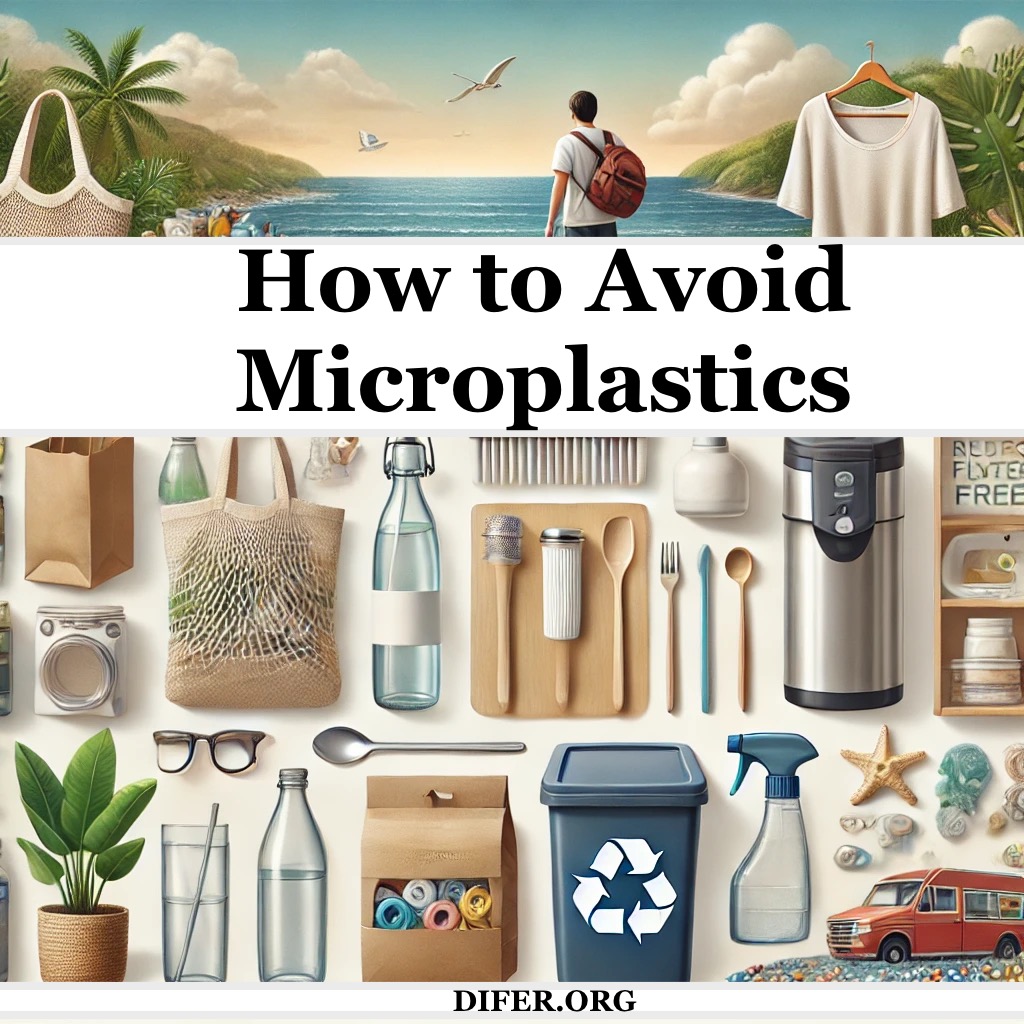Microplastics: Their Impact and How to Mitigate Them
What Are Microplastics?
Microplastics are tiny plastic particles, typically less than 5 millimeters in diameter, that originate from the breakdown of larger plastic debris and have become a pervasive pollutant in marine and terrestrial environments. They can come from a variety of sources, including synthetic clothing fibers, cosmetic products, and the degradation of larger plastic items like packaging materials and car tires pose significant threats to ecosystems and human health. (University of California) (UNEP – UN Environment Programme).
Microplastics are categorized into two types:
- Primary Microplastics: Manufactured small plastics, such as microbeads used in cosmetics and cleaning products, and fibers from synthetic textiles.
- Secondary Microplastics: Result from the degradation of larger plastic products, like bottles and bags, through weathering processes such as sunlight exposure and ocean waves.
Negative Effects on the Environment
Microplastics pose significant risks to marine and terrestrial ecosystems. When plastic waste enters the ocean, it breaks down into smaller particles that are ingested by marine life, leading to physical harm and toxic effects. Marine animals such as fish, birds, and mammals can suffer from reduced food intake, suffocation, and even genetic alterations due to the ingestion of microplastics (UNEP – UN Environment Programme).
Marine and Terrestrial Pollution: Microplastics have infiltrated various ecosystems, with alarming concentrations found in oceans, rivers, and soil. Marine organisms, from plankton to whales, ingest these particles, leading to physical harm, chemical exposure, and even death. Land animals can also ingest microplastics, which can lead to physical injuries and exposure to toxic substances.
Food Chain Contamination: As microplastics are consumed by smaller organisms, they travel up the food chain, accumulating in fish, shellfish, and eventually, human diets. This bioaccumulation poses risks to food safety and biodiversity .
Soil Degradation: Microplastics also impact soil health, affecting its structure and microbial activity, which is crucial for nutrient cycling and plant growth .
Health Risks for Humans
The presence of microplastics in the human body is an emerging concern. These particles can be ingested through food and water, inhaled from the air, or absorbed through the skin. Studies have found microplastics in various human organs and even in the placenta of newborns. Potential health risks include inflammation, oxidative stress, and disruptions to the endocrine system, which can lead to reproductive and developmental issues (Home) (Zuma Nutrition).
Negative Effects on Human Health
Chemical Exposure: Microplastics can absorb and carry toxic chemicals, such as pesticides and heavy metals. When ingested, these chemicals can enter the human body, potentially causing various health issues, including hormonal disruption, inflammation, and increased cancer risk.
Physical Health Risks: Inhalation of airborne microplastics can lead to respiratory problems, while ingestion through contaminated food and water can cause gastrointestinal distress and other health problems .
How to Avoid Microplastics
This section includes affiliate links to products that help reduce plastic waste.
- Avoid Plastic Packaging: Opt for products packaged in glass or metal instead of plastic to reduce plastic waste and prevent microplastics from entering the environment.
- Wear Natural Fibers: Choose clothing made from natural fibers like cotton, wool, or linen to minimize the release of synthetic fibers during washing and wearing.
- Use Natural Personal Care Products: Avoid cosmetics and personal care products that contain microbeads. Look for products labeled as free from polyethylene, polypropylene, and other common plastics.
- Filter Your Tap Water: Use water filters that can capture microplastics to reduce the number of particles in your drinking water.
- Reduce Plastic Use: Minimize single-use plastics by opting for reusable bags, bottles, bags, and containers. Choose products with minimal plastic packaging.
- Use Reusable Stainless Steel Water Bottles: Replace single-use plastic bottles with reusable stainless steel bottles to reduce plastic waste.
- Glass Food Storage Containers: Store food in glass containers rather than plastic to avoid plastic leaching into food.
- Choose Loose Produce: Buy loose fruits and vegetables instead of those wrapped in plastic to decrease plastic packaging waste.
- Support Legislation: Advocate for policies that ban or restrict microplastics in consumer products and promote better waste management practices.
- Proper Disposal and Recycling: Dispose of plastic waste responsibly and participate in recycling programs to prevent plastics from entering the environment.
Products to Help Prevent Microplastics
- Reusable Glass or Metal Water Bottles: Replace single-use plastic bottles with reusable glass or stainless steel options to minimize plastic waste and potential microplastic ingestion.
- Natural Fiber Clothing: Purchase clothing made from sustainable natural fibers to reduce the release of microfibers during washing.
- Reusable Glass Storage Containers and Reusable Silicone Food Storage Bags: Use glass containers and reusable storage bags to reduce the plastic waste from plastic containers and plastics bags.
- Eco-Friendly Cleaning Products: Use natural cleaning solutions like vinegar, castile soap, and baking soda instead of commercial cleaners that may contain microplastics (University of California).
- Water Filters: Invest in high-efficiency water filters designed to remove microplastics from tap water.
- Cotton Washing Machine Bags: Cotton Washing Bag help capture microfibers released during laundry, preventing them from entering waterways while also extending the life of clothing and reducing fading and damage from machine washing and drying.
- Compostable Alternatives: Use compostable products, such as bamboo toothbrushes and plant-based packaging.
- Reusable Canvas Shopping Bags: By using reusable bags you are taking a proactive step towards reducing your environmental impact and saying no to single-use plastics.
- Eco-Friendly Cleaning Products like a Steam Cleaner: Opt for natural cleaning products free from plastic. A steam cleaner can effectively clean and sanitize any surface with no harsh chemicals reducing the need for products in plastic bottles.
- Reusable Household Items: Invest in reusable straws, cutlery, and food storage options made from materials like stainless steel, glass, or silicone.
- Personal Care Products: Labeled ‘microbead-free’ to avoid microplastics in cosmetics and use menstrual cups or cotton sanitary napkins rather than plastic options.
Microplastics are a pervasive environmental contaminant with potential health risks for both humans and wildlife. By making informed choices about the products we use and advocating for sustainable practices, we can help reduce the spread of microplastics and protect our planet.
For more detailed information on microplastics and ways to mitigate their impact, you can visit resources like the University of California’s research on microplastics and the United Nations Environment Programme (UNEP) (University of California) (UNEP – UN Environment Programme) and MICROPLASTICS: A Growing Concern for Our Oceans, Environment, and Health
For more ways to reduce waste and save money, please read Green Ways to Save Green
Green Ways to Save Green: Eco-Friendly Ways to Save Money
DIFER.ORG supports reducing waste





